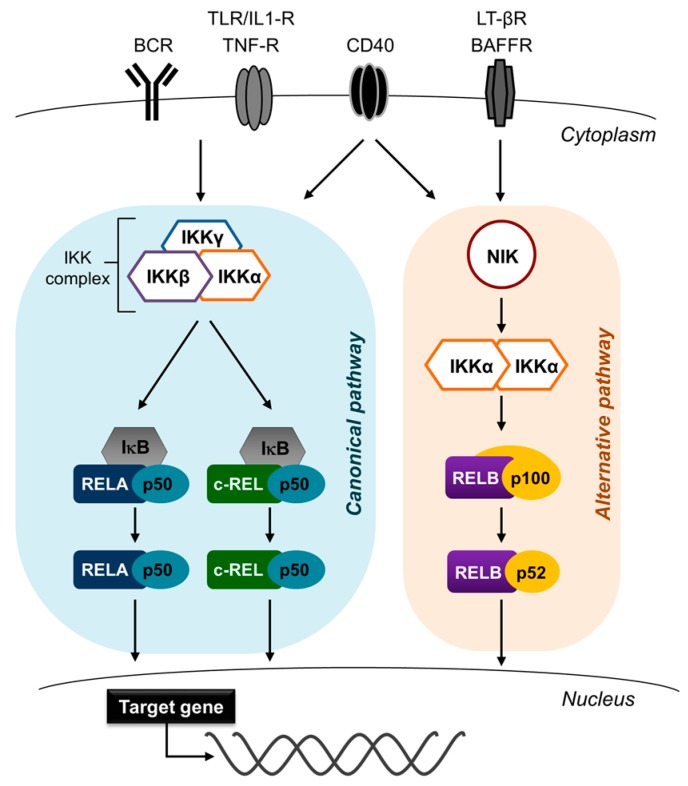Figure 1.
Nuclear factor-κB (NF-κB) signaling pathway. The NF-κB signaling cascade comprises two separate pathways. The canonical pathway (left) is activated by signals through several cell surface receptors, including the B-cell receptor (BCR), Toll-like receptor, and CD40. The activation results in the nuclear translocation of the heterodimers constituted by the canonical NF-κB subunits RELA, c-REL and p50 where they activate the transcription of target genes. The alternative pathway (right) is activated by B cell-activating receptor (BAFFR), lymphotoxin-β receptor (LT-βR), and CD40. Proteasomal degradation of p100 results in the generation of the major heterodimer of the alternative pathway RELB/p52, which translocates to the nucleus and activates target-gene transcription. Only RELA, RELB, and c-REL can transcribe target genes due to transactivation domains.

